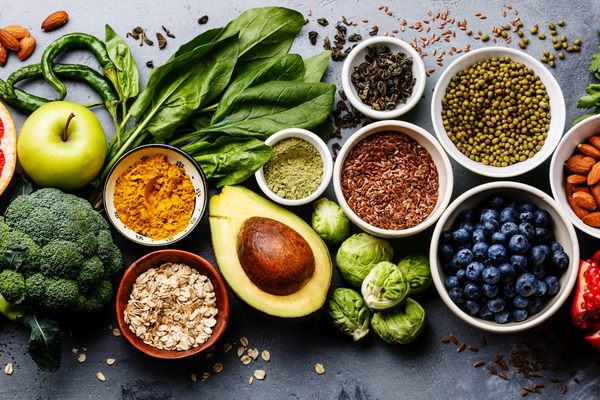You can feel like you’re doing everything right sometimes, but your body may not cooperate. Sometimes it can be like you’re running on empty, even on your best days. This frustration is palpable among some of us, as the visible efforts in the gym aren’t always enough if there’s an invisible battle raging within. Instead of pushing harder in her workouts, try turning your attention inward, specifically to your gut microbiome and fitness.
A holistic approach starts with a deep dive into your diet and lifestyle, looking for clues to persistent fatigue and digestive woes. We can simplify meals, eliminate processed foods, and slowly introduce a variety of fiber-rich vegetables, fermented foods, and targeted supplements. The initial changes will be subtle, but within a few weeks, you’ll start noticing a difference. Bloating decreased, energy levels are more stable throughout the day, and for the first time in years, you may wake up feeling genuinely refreshed.
As gut health improves, so does our capacity in the gym. Recovery time shortens, strength numbers climb, and endurance, perhaps a past struggle, will see dramatic improvements. The chronic low-grade inflammation that is silently draining your energy dissipates. You won’t just perform better; you’ll feel better, lighter, more vibrant.
True fitness isn’t just about what you to to your body, but what you nurture within it. A healthy gut microbiome isn’t just about digestion; it’s the hidden cornerstone of energy, resilience, and peak athletic performance.
The Inner Ecosystem: Unraveling the Gut-Brain-Body Axis
To truly appreciate the profound connection between your gut microbiome and fitness, we need to embark on a biological deep dive into the fascinating world of the gut-brain-body axis. This complex, bidirectional communication network is a scientific frontier, revealing how the trillions of microorganisms residing in your digestive tract — collectively known as the gut microbiome — exert far-reaching influence over virtually every aspect of your health, from your mood and immune system to your metabolism and, critically, your physical performance.
At the heart of this axis is the vagus nerve, a major nerve that acts as a superhighway of communication between your gut and your brain. Beyond this direct neural link, the gut microbes also communicate with your brain and body through various other pathways:
- Neurotransmitter Production: Believe it or not, a significant portion (around 90%) of the body’s serotonin, a key neurotransmitter involved in mood regulation, sleep, and appetite, is produced in the gut. Gut microbes can influence the production of various neurotransmitters, including dopamine, GABA, and acetylcholine, which directly impact mood, anxiety, cognitive function, and even muscle contraction and relaxation. An imbalanced microbiome can disrupt this delicate balance, leading to mood swings, anxiety, and a lack of motivation that directly hinders fitness adherence.
- Short-Chain Fatty Acids (SCFAs): When beneficial gut bacteria ferment dietary fiber, they produce beneficial compounds called short-chain fatty acids (SCFAs) like butyrate, acetate, and propionate. These SCFAs are not just waste products; they are potent signaling molecules. Butyrate, for instance, is a primary energy source for gut cells, helps maintain gut barrier integrity, and has systemic anti-inflammatory effects. They can also cross the blood-brain barrier, influencing brain function, and are involved in regulating metabolism and energy expenditure. A thriving microbiome produces more SCFAs, contributing to better energy levels and reduced inflammation, both crucial for fitness.
- Immune System Modulation: A significant portion (around 70-80%) of your immune system resides in your gut. The gut microbiome continuously interacts with immune cells, “educating” them and modulating immune responses. An imbalanced microbiome (dysbiosis) can lead to chronic low-grade systemic inflammation, where the immune system is constantly on alert. This inflammation diverts energy, increases muscle soreness, impairs recovery, and can contribute to insulin resistance, all of which are highly detrimental to athletic performance and overall fitness progression.
- Nutrient Absorption and Metabolism: Your gut microbes play a crucial role in breaking down complex carbohydrates that your body cannot digest, extracting additional nutrients and energy. They also synthesize certain vitamins (like B vitamins and Vitamin K). An imbalanced microbiome can impair nutrient absorption, leading to deficiencies that impact energy production, muscle function, and recovery. Furthermore, the microbiome influences metabolic pathways, affecting how your body stores fat, utilizes glucose, and manages insulin sensitivity. Poor metabolic health due to dysbiosis directly translates to decreased energy during workouts and hinders body composition goals.
- Gut Barrier Integrity (“Leaky Gut”): A healthy gut microbiome helps maintain the integrity of the gut lining, a protective barrier that prevents harmful substances (like undigested food particles, toxins, and pathogenic bacteria) from entering the bloodstream. When this barrier is compromised (often referred to as “leaky gut” or increased intestinal permeability), these substances can leak into the bloodstream, triggering systemic inflammation and an immune response. This chronic inflammation can manifest as fatigue, joint pain, poor recovery, and a significant hinderance to athletic performance, as the body is constantly fighting an internal battle.
In essence, your gut microbiome is not just a digestive organ; it’s a dynamic inner ecosystem that acts as a powerful regulator of your entire body, deeply influencing your energy levels, mood, immune function, nutrient utilization, and inflammatory response. Nurturing a balanced and diverse gut microbiome is therefore not just a health choice, but a fundamental pillar for transforming your fitness from the inside out.
Nourish Your Inner Ecosystem: Your Gut-Friendly Fitness Fuel Guide
Transforming your gut microbiome and fitness journey starts in the kitchen. What you eat directly impacts the diversity and health of your gut microbes. This “Gut-Friendly Foods” guide and sample 3-day meal plan are rich in prebiotics (food for beneficial bacteria), probiotics (beneficial bacteria themselves), and anti-inflammatory ingredients, providing a practical roadmap for nourishing your inner ecosystem.
Your Gut-Friendly Foods Guide:
1. Probiotic-Rich Foods (Fermented Foods): These foods contain live, beneficial bacteria that can colonize your gut and enhance its diversity.
- Plain Greek Yogurt or Kefir (unsweetened): Look for labels that say “live and active cultures.” Great source of protein too.
- Sauerkraut: Fermented cabbage. Choose raw, unpasteurized versions found in the refrigerated section.
- Kimchi: Spicy fermented cabbage, a staple in Korean cuisine. Also unpasteurized.
- Tempeh: Fermented soybean product, excellent plant-based protein.
- Miso: Fermented soybean paste, often used in Japanese cooking.
- Kombucha: Fermented tea. Choose low-sugar varieties.
- Pickles (Fermented, not vinegar-brined): Look for “fermented” on the label, usually found in refrigerated sections.
2. Prebiotic-Rich Foods (Fiber that Feeds Your Microbes): These are non-digestible fibers that act as food for your beneficial gut bacteria, allowing them to thrive and produce beneficial SCFAs.
- Garlic & Onions: Potent sources of prebiotics.
- Asparagus: A great source of inulin, a type of prebiotic fiber.
- Bananas (slightly green): Contain resistant starch, which is a powerful prebiotic.
- Oats (rolled or steel-cut): Rich in beta-glucans, a soluble fiber.
- Apples (with skin): Contain pectin, a soluble fiber.
- Flaxseeds & Chia Seeds: Excellent sources of soluble fiber.
- Legumes (Lentils, Chickpeas, Beans): Packed with resistant starch and soluble fiber.
- Root Vegetables (Sweet Potatoes, Jicama): Good sources of complex carbohydrates and fiber.
3. Anti-Inflammatory Foods: These foods help to reduce systemic inflammation, which is often exacerbated by an imbalanced gut.
- Fatty Fish (Salmon, Mackerel, Sardines): Rich in Omega-3 fatty acids, powerful anti-inflammatory agents.
- Berries (Blueberries, Raspberries, Strawberries): Loaded with antioxidants and phytonutrients.
- Leafy Green Vegetables (Spinach, Kale, Collard Greens): High in vitamins, minerals, and antioxidants.
- Turmeric & Ginger: Potent anti-inflammatory spices.
- Healthy Fats (Avocado, Olive Oil, Nuts, Seeds): Contain monounsaturated and polyunsaturated fats that reduce inflammation.
4. Diverse Whole Grains: Provide varied fibers that nourish a broader range of gut bacteria.
- Quinoa, Brown Rice, Farro, Barley.
5. Avoid/Limit: Processed foods, refined sugars, artificial sweeteners, excessive unhealthy fats, and excessive alcohol, as these can negatively impact gut diversity and promote inflammation.
Sample 3-Day Gut-Friendly Meal Plan:
Day 1: Fueling the Foundation
- Breakfast: Oatmeal made with rolled oats, water/unsweetened almond milk, topped with sliced banana (slightly green), a sprinkle of flaxseeds, and a handful of blueberries. Served with a side of plain Greek yogurt (live cultures).
- Lunch: Large salad with mixed greens, lentils, chopped cucumber, bell peppers, avocado, and a dressing made with olive oil and apple cider vinegar.
- Dinner: Baked salmon with roasted asparagus and sweet potato wedges. Season with turmeric and black pepper.
Day 2: Diversity and Depth
- Breakfast: Smoothie: Unsweetened kefir, spinach, mixed berries, and a tablespoon of chia seeds.
- Lunch: Leftover baked salmon with a side of quinoa and a scoop of unpasteurized sauerkraut.
- Dinner: Chicken and vegetable stir-fry: Lean chicken breast, broccoli, carrots, bell peppers, and snap peas, stir-fried with a ginger-garlic sauce (use low-sodium soy sauce or tamari). Served with brown rice.
Day 3: Sustained Nourishment
- Breakfast: Scrambled eggs with sautéed spinach and a side of whole-grain toast. A small bowl of plain unsweetened Greek yogurt with a few raspberries.
- Lunch: Large bowl of lentil soup (homemade or low-sodium canned) with a side of whole-grain crackers and a small handful of mixed nuts.
- Dinner: Tempeh and vegetable skewers (bell peppers, onions, zucchini) grilled or baked. Served with a side of mixed berry compote (berries cooked down with a tiny bit of water, no added sugar).
Tips for Success:
- Hydration: Drink plenty of water throughout the day to support digestion and overall health.
- Slow Eating: Eat slowly and mindfully, chewing your food thoroughly to aid digestion.
- Consistency: Consistency is key. Small, sustainable changes over time will yield the best results for your gut health.
- Listen to Your Body: Pay attention to how different foods make you feel. Your body provides valuable feedback.
True fitness starts from within. Transform your health from the inside out by nurturing your gut microbiome. Claim your complimentary three-day pass to YouFit Gyms and take a holistic approach to your well-being, exploring how proper nutrition and gut health can revolutionize your fitness journey.
Current Trends Highlighting the Gut Microbiome and Fitness
The burgeoning understanding of the gut microbiome and fitness is not just a scientific curiosity; it’s a rapidly accelerating trend that is fundamentally reshaping how we approach health, nutrition, and athletic performance. Several current movements in wellness are deeply intertwined with this gut-centric perspective.
- Personalized Nutrition and Precision Health: Moving beyond generic dietary advice, there’s a strong trend towards personalized nutrition, often informed by microbiome analysis. Companies are emerging that analyze an individual’s gut bacteria to provide tailored dietary recommendations for optimizing health and fitness. This aligns perfectly with the idea that specific foods (prebiotics) and strains of probiotics might be more beneficial for certain individuals based on their unique gut flora, directly impacting their gut microbiome and fitness journey.
- Anti-Inflammatory Lifestyles: Chronic low-grade inflammation is now recognized as a root cause of many modern diseases and a significant hinderance to athletic performance and recovery. The focus on reducing inflammation through diet (rich in omega-3s, antioxidants, diverse fibers) and lifestyle choices is paramount. Since an imbalanced gut microbiome is a major driver of systemic inflammation, nurturing gut health has become a key strategy in the anti-inflammatory trend, directly supporting enhanced fitness.
- Mind-Body Connection and Mental Well-being: The “gut-brain axis” has gained significant traction, emphasizing how gut health profoundly impacts mood, stress resilience, and cognitive function. As mental well-being becomes an increasingly prioritized aspect of overall health, understanding and nurturing the gut microbiome for its influence on neurotransmitter production and brain function is a major trend. Athletes and fitness enthusiasts recognize that a healthy mind, fueled by a healthy gut, is crucial for motivation, focus, and adherence to training.
- Holistic Approach to Athlete Performance: Elite athletes and serious fitness enthusiasts are moving beyond just macronutrient counting and traditional training splits. They are increasingly exploring the role of the gut microbiome in optimizing nutrient absorption, reducing exercise-induced gut distress, enhancing recovery, modulating immune function (reducing susceptibility to illness from intense training), and even influencing muscle growth and energy production. This holistic approach sees the gut as a foundational element of peak performance.
- Sustainable and Regenerative Agriculture: There’s a growing awareness of how soil health impacts nutrient density in our food and, by extension, our gut health. The trend towards sustainable agriculture and consuming foods from diverse, healthy ecosystems aligns with the goal of fostering a diverse gut microbiome and fitness by providing a wider array of fibers and beneficial compounds.
- Focus on Fiber Diversity and Prebiotics: Beyond just “eating enough fiber,” the emphasis is now on eating a diversity of fibers to feed a wide range of beneficial gut bacteria. The importance of prebiotic foods (garlic, onions, asparagus, oats, legumes) is being highlighted as essential for cultivating a robust and resilient gut ecosystem, directly impacting energy levels and metabolic health for fitness.
These trends collectively underscore a revolutionary understanding: that true health and peak physical performance are deeply rooted in the unseen world within our gut. Nurturing the gut microbiome is no longer a fringe idea; it’s becoming a central pillar of modern wellness and fitness strategy.
Best Practices for Nurturing Your Gut Microbiome and Enhancing Fitness
To effectively leverage the power of your gut microbiome and fitness for transformative results, consider these evidence-based best practices:
- Eat a Diverse Range of Plant-Based Foods: This is perhaps the most crucial practice. Aim for at least 30 different types of plant foods (fruits, vegetables, whole grains, legumes, nuts, seeds) per week. Each plant type contains unique fibers and phytonutrients that feed different beneficial bacterial species, promoting gut diversity – the hallmark of a healthy microbiome.
- Prioritize Prebiotic-Rich Foods: Regularly include foods like garlic, onions, asparagus, bananas (slightly green), oats, apples, and legumes in your diet. These non-digestible fibers act as fuel for your beneficial gut bacteria, allowing them to thrive and produce health-boosting short-chain fatty acids (SCFAs) crucial for energy and anti-inflammation.
- Incorporate Fermented Foods Regularly: Integrate unpasteurized, live-culture fermented foods into your diet daily or several times a week. Examples include plain Greek yogurt/kefir, sauerkraut, kimchi, and tempeh. These foods introduce beneficial bacteria directly into your gut, contributing to diversity and potentially supporting immune function.
- Focus on Anti-Inflammatory Fats and Antioxidants: Include sources of Omega-3 fatty acids (fatty fish, flaxseeds, chia seeds) and a wide array of colorful fruits and vegetables (berries, leafy greens) rich in antioxidants. These compounds help to combat systemic inflammation, which can be exacerbated by gut dysbiosis and hinder recovery and performance.
- Limit Processed Foods, Refined Sugars, and Artificial Sweeteners: These dietary culprits can negatively impact gut diversity, promote the growth of less beneficial bacteria, and contribute to systemic inflammation. Reducing their intake is a fundamental step towards a healthier gut and improved fitness.
- Stay Adequately Hydrated: Water is essential for proper digestion, nutrient absorption, and the smooth transit of food through your digestive system. It also supports the environment for beneficial gut bacteria to flourish.
- Manage Stress Effectively: The gut-brain axis means stress directly impacts your gut health. Chronic stress can alter gut motility, permeability, and even the composition of your microbiome. Incorporate stress-management techniques like mindfulness, meditation, spending time in nature, or light exercise to support both your mental and gut health.
- Prioritize Quality Sleep: Poor sleep can negatively affect your gut microbiome composition. Aim for 7-9 hours of quality, uninterrupted sleep each night to allow your body and gut to rest, repair, and regenerate.
- Consider Probiotic Supplements (Strategically): While food-first is ideal, a high-quality probiotic supplement with diverse strains may be beneficial, especially after antibiotic use or during periods of stress. Consult with a healthcare professional to determine if a supplement is right for you.
By consistently implementing these best practices, you’ll be actively nurturing your inner ecosystem, leading to improved energy, reduced inflammation, enhanced nutrient absorption, and ultimately, a transformed fitness journey rooted in profound internal health.
True fitness starts from within. Transform your health from the inside out by nurturing your gut microbiome. Claim your complimentary three-day pass to YouFit Gyms and take a holistic approach to your well-being, exploring how proper nutrition and gut health can revolutionize your fitness, making you stronger, more resilient, and more vibrant from the inside out.










